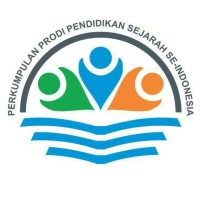Industrialisasi dan Dampak Sosial di Regentschap Pemalang Masa Kolonial Belanda
Abstract
Keywords
Full Text:
PDFReferences
Alamsyah. (TT). Deskripsi Hinterland Karesidenan Tegal Abad XIX. Diakses melalui http://eprints.undip.ac.id/3268/2/23_artikel_P_Alam.pdf
Algemeen handelsblad voor Nederlandsch-Indië, 02 Mei 1927.
Algemeen handelsblad voor Nederlandsch-Indië, 20 April 1932.
Algemeen handelsblad voor Nederlandsch-Indië, 3 Oktober 1935.
Algemeen handelsblad voor Nederlandsch-Indië, 15 Oktober 1936.
Bahari, Y. (2010). Karl Marx: Sekelumit tentang Hidup dan Pemikirannya. Jurnal Pendidikan Sosiologi dan Humaniora, 1(1), 1–9.
Basundoro, P. (2020). Pengantar Sejarah Kota. Yogyakarta: Ombak.
Basundoro, P. (2023). Pengantar Kajian Sejarah Ekonomi Perkotaan Indonesia. Jakarta: kencana.
Bataviaasch nieuwsblad, 20 September 1920.
Bataviaasch nieuwsblad, 07 Juli 1941.
Boom, E.H. 1864. Nederlandsch Oost- Indië. Zuthpen: F.B. Plantenga.
Brinkman's cultuur-adresboek voor Nederlandsch-Indië, 1939.
Candranegara V, R.M.A.A. (2024). Perjalanan Arya Purwalelana Mengelilingi Jawa (1860-1875). Semarang: Sinar Hidoep.
De locomotief, 9 April 1898.
De locomotief, 21 April 1928.
De locomotief, 16 Oktober 1936.
De nieuwe courant, 17 Juni 1913.
De Preanger-bode, 11 Februari 1921.
Domis, H.J. (1829). Aanteekeningen, 3 de Stukje. Pasoeroean.
Harinie, L.T. (2024). “Pengertian Hubungan Industrial”. In Wardana, M.A. (ed.). Hubungan Industrial. Badung: Penerbit Intelektual Manifes Media.
Hartatik, E.S. (2018). Dua Abad Jalan Raya Pantura: Sejak Era Kerajaan Mataram Islam hingga Orde Baru. Bantul: Nurmahera.
Hartatik, E.S. (2019). From Railroad to Highway: Shifting Use of Land Transportation System in the Northern Coast of Central Java. Paramita: Historical Studies Journal, 29(2), 224–234.
Harvey, W. (2004). The ‘New’ Imperialism: Accumulation by Dispossession. Socialist Register, 40(1), 63‒87.
Het nieuws van den dag voor Nederlandsch–Indië, 29 Maret 1927.
Hikmat. (2020). Sosiologi Industri. Bandung: Agung Ilmu.
Hollander, J.J.D. (1861). Handleiding bij de Beoefening der Land- en Volkenkunde van Nederlandsch Oost-Indië. Breda: HUBERT- G. NYS.
Kartodirdjo, S. (1990). “Industrialisasi dan Dampaknya terhadap Masyarakat Indonesia.” In Anhar Gonggong (ed.). Seminar Sejarah Nasional V Subtema Sejarah Industri. Jakarta: Departemen Pendidikan dan Kebudayaan Republik Indonesia.
Indië: geïllustreerd weekblad voor Nederland en koloniën, 23 November 1921.
Indisch Tijdschrift voor Spoor en Tramwegwezen, Jaargang VI No. 12, December 1918.
Java-bode, 8 Juni 1871.
Larasaty, D.P. & Savitri M. (2021). Warisan Budaya Industri Gula di Kabupaten Pemalang. Tumotowa, 4(2), 79–94.
Lucas, A. (1977). Social Revolution in Pemalang, Central Java, 1945. Indonesia, No. 24 (Oct., 1977), 86‒122.
Lutfianti, N. & Wahid, A. (2023). SCS (Semarang–Cheribon Stoomtram Maatshappij) Network Along the North Coast ff Java Semarang–Cirebon, 1895–1942. Satmata: Journal of Historical Education Studies, 1(2), 86–101.
Muepae, P. (2011). Pemikiran Karl Marx: Teori Kelas. Jurnal Filsafat Driyarkara, XXXII(2), 15‒25.
Niel, R.V. (2003). Sistem Tanam Paksa di Jawa. Jakarta: Pustaka LP3ES Indonesia.
Oetoesan Hindia, 23 Juli 1920.
Pemandangan, 1 September 1934.
Prasetijo, A. (2015). Pergerakan Sosial: Antara Marxian dan Non Marxian. Jurnal Antropologi: Isu-isu Budaya, 17(1), 65‒70.
Regerings-Almanak voor Nederlandsch-Indië 1867.
Schaik, A.V. (1996). “Pahit-pahit Manis: Seabad Industri Gula Comal”. Dalam Kano, H., Hüsken, F., & Surjo, D. Di Bawah Asap Pabrik Gula: Masyarakat Desa di Pesisir Jawa Sepanjang Abad Ke-20. Yogyakarta: Akatiga & Gadjah Mada University Press.
Sipatahoenan, 30 Juni 1938.
Sipatahoenan, 20 Juli 1938.
Sipatahoenan, 4 Agustus 1938.
Soerabaijasch handelsblad, 25 April 1930.
Soerabaijasch handelsblad, 6 November 1937.
Sulistiyo, B. (1995). Pemogokan Buruh: Sebuah Kajian Sejarah. Yogyakarta: TiaraWacana.
Yuliati, D. (1997). “Industrialisasi di Semarang (1906–1930)”. In Kongres Nasional Sejarah 1997 Sub Tema Dinamika Sosial Ekonomi III. Jakarta: Departemen Pendidikan dan Kebudayaan Republik Indonesia, 1997.
Wasino dkk. (2022). Semarang Sebagai Simpul Ekonomi: Bank Indonesia dalam Dinamika Perekonomian Jawa Tengah. Jakarta: Bank Indonesia Institute.
Wasino & Hartatik, E.S. (2017). Dari Industri Gula hingga Batik Pekalongan: Sejarah Sosial Ekonomi Pantai Utara Jawa pada Masa Kolonial Belanda. Bantul: Magnum.
Zuhdi, S. (2002). Cilacap (1830-1942): Bangkit dan Runtuhnya Suatu Pelabuhan di Jawa. Jakarta: Kepustakaan Populer Gramedia.
DOI: https://doi.org/10.37905/jhcj.v7i2.31243
Refbacks
- There are currently no refbacks.

Jambura History and Culture Journal (ISSN Online: 2686-1070 | ISSN Print: 2654-6388) is licensed under a Creative Commons Attribution 4.0 International License.











